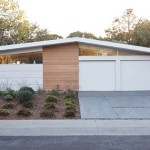Plumbing plans for your house are blueprints that outline the design and layout of the water supply and drainage systems within a building. They provide a comprehensive guide for contractors and plumbers during the installation and maintenance of plumbing fixtures, pipes, and other components. These plans serve as essential documentation, ensuring code compliance, proper functionality, and efficient water management for your residence.
Detailed plumbing plans include specifications for water supply lines, drainage systems, gas lines (if applicable), fixture locations, and the sizing and placement of pipes and valves. By having a well-planned plumbing system, you can avoid costly repairs, leaks, and other issues that can arise from improper design or installation. Moreover, plumbing plans facilitate communication between architects, engineers, builders, and contractors, ensuring a seamless coordination during the construction or renovation process.
In the following sections, we will delve deeper into the components of plumbing plans, their importance, and how they can contribute to the efficient and reliable operation of the plumbing systems in your home.
Plumbing plans for your house are essential for ensuring a properly functioning and efficient plumbing system. Here are ten important points to consider:
- Outlines water supply lines
- Specifies drainage systems
- Includes gas line specifications (if applicable)
- Indicates fixture locations
- Details pipe and valve sizing
- Facilitates communication
- Ensures code compliance
- Prevents costly repairs
- Enhances water management
- Supports seamless construction
By carefully considering these points, you can create a plumbing plan that meets the specific needs of your home and ensures a reliable and long-lasting plumbing system.
Outlines water supply lines
The plumbing plan outlines the water supply lines, which are the pipes that carry clean water throughout your house. These lines are typically made of copper, PEX, or CPVC, and their size and layout will depend on the number of fixtures and appliances in your home, as well as the water pressure and flow rate. The plumbing plan will also indicate the location of the main water shut-off valve, which is essential for isolating the water supply in the event of a leak or repair.
- Size and type of water supply lines: The size of the water supply lines will vary depending on the fixture or appliance they are supplying. For example, a kitchen sink will require a larger water supply line than a bathroom sink. The type of water supply line will also depend on the specific application, such as copper for durability and PEX for flexibility.
- Location of water supply lines: The plumbing plan will indicate the location of the water supply lines, including where they enter the house, where they branch off to different fixtures and appliances, and where they connect to the main water shut-off valve.
- Isolation valves: The plumbing plan will also include the location of isolation valves, which are valves that can be closed to isolate a particular section of the water supply line for repairs or maintenance.
- Water pressure and flow rate: The plumbing plan will take into account the water pressure and flow rate required for each fixture and appliance in the house. This will ensure that all fixtures and appliances have adequate water pressure and flow rate for proper operation.
By carefully planning the water supply lines, you can ensure that your home has a reliable and efficient water supply system that meets the needs of all your fixtures and appliances.
Specifies drainage systems
The plumbing plan also specifies the drainage systems, which are the pipes that carry wastewater away from your home. These lines are typically made of PVC or ABS, and their size and layout will depend on the number of fixtures and appliances in your home, as well as the volume of wastewater generated. The plumbing plan will also indicate the location of the main sewer line, which is the pipe that carries wastewater away from your home to the municipal sewer system or septic tank.
- Size and type of drainage lines: The size of the drainage lines will vary depending on the fixture or appliance they are draining. For example, a kitchen sink will require a larger drainage line than a bathroom sink. The type of drainage line will also depend on the specific application, such as PVC for durability and ABS for cost-effectiveness.
- Location of drainage lines: The plumbing plan will indicate the location of the drainage lines, including where they exit the house, where they branch off to different fixtures and appliances, and where they connect to the main sewer line.
- Vents: The plumbing plan will also include the location of vents, which are pipes that allow air to enter the drainage system. Vents are necessary to prevent the drainage system from becoming clogged or creating a vacuum, which can cause wastewater to back up into your home.
- Traps: The plumbing plan will also include the location of traps, which are devices that create a water seal to prevent sewer gases from entering your home. Traps are typically located under sinks and drains.
By carefully planning the drainage systems, you can ensure that your home has a reliable and efficient way to remove wastewater and prevent sewer gases from entering your home.
Includes gas line specifications (if applicable)
For homes that use natural gas or propane, the plumbing plan will also include specifications for the gas lines. These lines are typically made of black iron or copper, and their size and layout will depend on the number and type of gas appliances in your home, as well as the gas pressure and flow rate. The plumbing plan will also indicate the location of the main gas shut-off valve, which is essential for isolating the gas supply in the event of a leak or repair.
- Size and type of gas lines: The size of the gas lines will vary depending on the appliance they are supplying. For example, a gas stove will require a larger gas line than a gas fireplace. The type of gas line will also depend on the specific application, such as black iron for durability and copper for flexibility.
- Location of gas lines: The plumbing plan will indicate the location of the gas lines, including where they enter the house, where they branch off to different appliances, and where they connect to the main gas shut-off valve.
- Vents: The plumbing plan will also include the location of vents, which are pipes that allow air to enter the gas system. Vents are necessary to prevent the gas system from becoming clogged or creating a vacuum, which can cause gas to leak into your home.
- Gas pressure and flow rate: The plumbing plan will take into account the gas pressure and flow rate required for each gas appliance in the house. This will ensure that all gas appliances have adequate gas pressure and flow rate for proper operation.
By carefully planning the gas lines, you can ensure that your home has a reliable and safe gas supply system that meets the needs of all your gas appliances.
Indicates fixture locations
The plumbing plan also indicates the location of all fixtures in your home, including sinks, toilets, showers, bathtubs, and appliances. This information is essential for ensuring that the plumbing system is properly designed and installed to meet the needs of your family. The plumbing plan will also indicate the type of fixture that is to be installed at each location, such as a single-handle faucet or a dual-handle faucet, and the size and style of the fixture.
- Type of fixture: The plumbing plan will indicate the type of fixture that is to be installed at each location, such as a single-handle faucet or a dual-handle faucet, a standard toilet or a low-flow toilet, and a bathtub or a shower.
- Location of fixture: The plumbing plan will indicate the exact location of each fixture, including the distance from the walls and other fixtures, and the height from the floor.
- Size and style of fixture: The plumbing plan will also indicate the size and style of each fixture, such as the dimensions of the sink or bathtub, and the finish of the faucet.
- Accessibility of fixture: The plumbing plan will also take into account the accessibility of each fixture, such as whether it is accessible for people with disabilities or whether it is located in a tight space.
By carefully planning the location of the fixtures, you can ensure that your home has a functional and efficient plumbing system that meets the needs of your family.
Details pipe and valve sizing
The plumbing plan also details the size of the pipes and valves that will be used in the plumbing system. The size of the pipes will depend on the volume of water or gas that will be flowing through them, and the size of the valves will depend on the size of the pipes they are controlling. The plumbing plan will also indicate the type of pipe and valve that will be used in each location, such as copper pipe for water supply lines and PVC pipe for drainage lines.
The following are some of the factors that will be considered when determining the size of the pipes and valves in a plumbing system:
- Volume of water or gas: The size of the pipes will depend on the volume of water or gas that will be flowing through them. For example, a water supply line that serves a kitchen sink will need to be larger than a water supply line that serves a bathroom sink.
- Pressure: The size of the pipes and valves will also depend on the pressure of the water or gas that will be flowing through them. For example, a water supply line that serves a high-pressure appliance, such as a dishwasher, will need to be larger than a water supply line that serves a low-pressure appliance, such as a faucet.
- Type of pipe and valve: The type of pipe and valve that will be used will also affect the size. For example, copper pipe is thicker than PVC pipe, so a copper pipe of the same diameter as a PVC pipe will be able to handle a higher pressure.
By carefully considering the size of the pipes and valves in your plumbing system, you can ensure that your home has a reliable and efficient system that meets the needs of your family.
In addition to the size of the pipes and valves, the plumbing plan will also indicate the location of all the pipes and valves in your home. This information is essential for ensuring that the plumbing system is properly installed and maintained.
Facilitates communication
Plumbing plans are essential for facilitating communication between the various parties involved in the design, construction, and maintenance of a building’s plumbing system. These plans provide a common reference point for architects, engineers, builders, contractors, and inspectors, ensuring that everyone is working from the same set of information.
During the design phase, the plumbing plan helps to ensure that the plumbing system is properly integrated with the other building systems, such as the electrical and HVAC systems. This helps to avoid conflicts and costly rework later on.
During the construction phase, the plumbing plan provides a roadmap for the contractors who are installing the plumbing system. The plan shows the location of all the pipes, valves, and fixtures, as well as the size and type of materials to be used. This helps to ensure that the system is installed correctly and in accordance with the design intent.
During the maintenance phase, the plumbing plan provides a valuable resource for troubleshooting and repair. The plan can be used to identify the location of pipes and valves, as well as the type of materials used. This information can help to expedite repairs and minimize downtime.
Overall, plumbing plans are essential for facilitating communication between the various parties involved in the design, construction, and maintenance of a building’s plumbing system. These plans help to ensure that the system is properly designed, installed, and maintained, which can save time and money in the long run.
Ensures code compliance
Plumbing plans are essential for ensuring that a building’s plumbing system complies with all applicable codes and regulations. These codes and regulations are in place to protect the health and safety of the occupants of the building, as well as to ensure the proper functioning of the plumbing system.
In the United States, the most common plumbing code is the International Plumbing Code (IPC). The IPC is a comprehensive set of regulations that covers all aspects of plumbing design and installation. The IPC is updated every three years to reflect the latest changes in plumbing technology and best practices.
In addition to the IPC, there may be other local or state codes that apply to plumbing systems. For example, some jurisdictions have specific codes for plumbing systems in commercial buildings or in areas that are prone to earthquakes or other natural disasters.
It is the responsibility of the plumbing designer to ensure that the plumbing plan complies with all applicable codes and regulations. This includes checking the plan for compliance with the IPC, as well as any local or state codes that may apply.
By ensuring that the plumbing plan complies with all applicable codes and regulations, the plumbing designer can help to protect the health and safety of the occupants of the building, as well as ensure the proper functioning of the plumbing system.
Prevents costly repairs
Plumbing plans can help to prevent costly repairs in a number of ways.
- By ensuring that the plumbing system is properly designed and installed, plumbing plans can help to prevent leaks and other problems that can lead to water damage. Water damage is one of the most common and expensive problems that homeowners face, and it can be caused by a variety of plumbing issues, such as leaky pipes, faulty fixtures, and clogged drains. By having a plumbing plan created by a qualified professional, you can help to ensure that your plumbing system is designed and installed in a way that minimizes the risk of leaks and other problems.
- Plumbing plans can also help to prevent costly repairs by making it easier to troubleshoot and repair problems. When a plumbing problem occurs, it can be difficult to identify the source of the problem without a plumbing plan. This can lead to unnecessary repairs and wasted time and money. However, if you have a plumbing plan, you can easily identify the location of the problem and the best way to repair it.
- In addition, plumbing plans can help to prevent costly repairs by providing a record of the plumbing system. This record can be invaluable if you need to make changes to the plumbing system in the future. For example, if you want to add a new fixture or appliance, you can use the plumbing plan to determine the best location for the new fixture or appliance and to ensure that the plumbing system can handle the additional load.
- Finally, plumbing plans can help to prevent costly repairs by providing peace of mind. Knowing that your plumbing system has been properly designed and installed can give you peace of mind and help you to avoid the stress and expense of plumbing problems.
Paragraph after details –>
Overall, plumbing plans are an essential tool for preventing costly repairs and protecting your home from water damage. By having a plumbing plan created by a qualified professional, you can help to ensure that your plumbing system is designed and installed in a way that minimizes the risk of problems and provides you with peace of mind.
Enhances water management
Plumbing plans can also play a vital role in enhancing water management within a household. By optimizing the design and layout of the plumbing system, homeowners can improve water efficiency, reduce water waste, and conserve this precious resource.
- Efficient fixture selection: Plumbing plans provide a clear overview of the fixtures and appliances that will be installed in the home. This allows homeowners to make informed decisions about the type and efficiency of the fixtures they choose. By selecting water-efficient fixtures, such as low-flow toilets, showerheads, and faucets, homeowners can significantly reduce their water consumption without compromising on functionality or comfort.
- Optimized pipe sizing: The size of the pipes used in a plumbing system can impact water flow and efficiency. Plumbing plans ensure that the pipes are sized appropriately for the volume of water that will be flowing through them. This optimization helps to minimize water pressure loss and ensures that fixtures receive an adequate supply of water, even during peak usage times.
- Leak detection and prevention: Plumbing plans provide a detailed layout of the entire plumbing system, making it easier to identify potential leak points. By regularly inspecting the system according to the plan, homeowners can proactively identify and address leaks, preventing water damage and costly repairs. Additionally, installing leak detection devices or smart water monitoring systems can further enhance leak detection capabilities.
- Water conservation strategies: Plumbing plans can incorporate water conservation strategies, such as rainwater harvesting systems or greywater reuse systems. Rainwater harvesting involves collecting and storing rainwater for non-potable uses, such as irrigation or flushing toilets. Greywater reuse systems redirect wastewater from sinks, showers, and bathtubs to be treated and reused for non-potable purposes, reducing the demand for freshwater.
By implementing these water management strategies, plumbing plans empower homeowners to actively participate in water conservation efforts, reduce their environmental impact, and enjoy the benefits of a more efficient and sustainable plumbing system.
Supports seamless construction
Plumbing plans are essential for supporting seamless construction by providing a clear and comprehensive blueprint for the installation of the plumbing system. These plans guide contractors and tradespeople throughout the construction process, ensuring that the plumbing system is installed correctly and efficiently, without costly delays or rework.
One of the key benefits of plumbing plans is that they facilitate effective coordination among different trades involved in the construction process. By providing a shared reference point, the plans enable plumbers, electricians, and other contractors to coordinate their work and avoid conflicts during installation. This coordination is crucial for ensuring that the plumbing system is properly integrated with other building systems, such as the electrical and HVAC systems.
Furthermore, plumbing plans help to minimize errors and omissions during construction. The detailed nature of these plans reduces the likelihood of mistakes, as they provide precise specifications for the location, size, and type of plumbing fixtures, pipes, and valves to be installed. This level of detail helps to prevent costly rework and ensures that the plumbing system functions as intended.
Finally, plumbing plans serve as a valuable tool for troubleshooting and resolving issues that may arise during construction. If any discrepancies or problems are encountered during the installation process, the plans can be consulted to identify the source of the issue and determine the appropriate corrective actions. This proactive approach helps to minimize delays and ensures that the construction process proceeds smoothly and efficiently.
Overall, plumbing plans are indispensable for supporting seamless construction by providing a clear roadmap for the installation of the plumbing system. These plans facilitate effective coordination among trades, minimize errors and omissions, and serve as a valuable resource for troubleshooting and resolving issues during construction.









Related Posts








